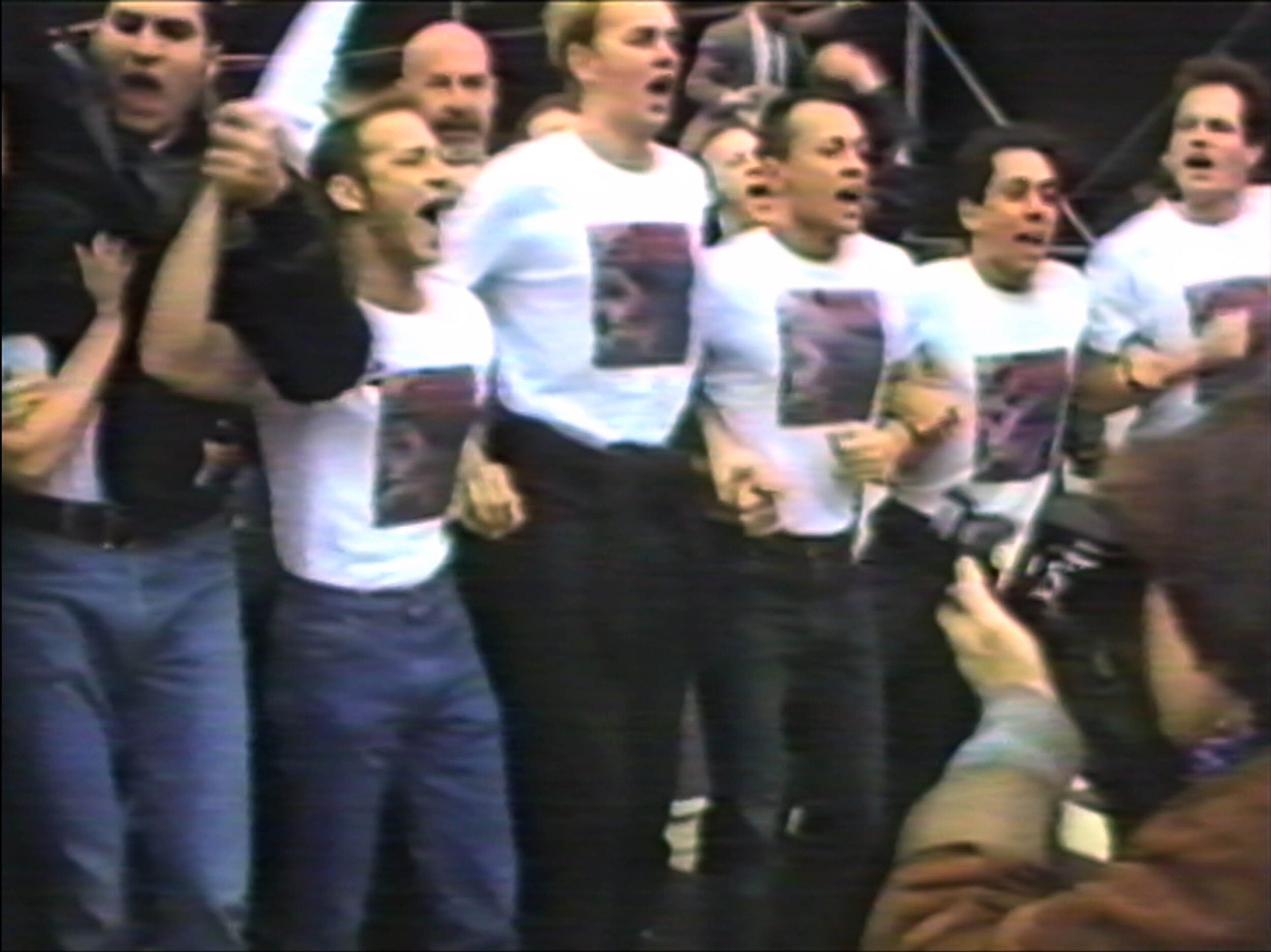
United in Anger: A History of ACT UP
Study Guide
Educational DVD and streaming file now available! To purchase the DVD or streaming file of United in Anger for your school, please contact Jim Hubbard via email at jim@jimhubbardfilms.com.
United in Anger
ACT UP Oral History Project
How to Use this Study Guide
This Study Guide for the film United in Anger: A History of ACT UP has been designed largely in response to feedback offered during many screenings of the film, primarily at national and international film festivals and in college classrooms over a number of years. Many of the questions posed here are ones asked by students and activists in their efforts to better understand the legacy of ACT UP (the AIDS Coalition to Unleash Power), the film’s role in preserving that legacy, and its meaning for their own lives. We are deeply appreciative to all those who have contributed their comments and questions.
The Study Guide is divided into five units that explore key themes and content areas of the film.
– The Guide opens with Previewing Exercises that assess existing knowledge about ACT UP and the history of HIV/AIDS, frame the historical and cultural context of the epidemic, and ask viewers to clarify their expectations for the film. A preliminary address by Hubbard and Schulman offers a pointed historical context for the creation of ACT UP, the Oral History Project, and the film United in Anger.
– Each of the five units that follow opens with a unit summary and learning objectives. These are followed by a introductory section titled “Making Connections” meant to initiate class discussion by introducing key terms and ideas, drawing out students’ native knowledge, establishing a context for the analysis to come, and providing resources that help to frame the issues raised in the unit. The “Making Connections” segments can also be used as pre-viewing exercises.
– At the heart of each unit are the Discussion Sections designed to facilitate meaningful, honest conversations about the film, ACT UP, HIV/AIDS, and the viewers themselves. The questions in each Discussion Section build from informational and descriptive to analytical and evaluative. Embedded links to clips from the film will refresh viewers’ memories and help to encourage detailed and thoughtful response. Perhaps most useful to teachers and activists new to the film and to ACT UP, many questions contain links to video responses by director/producer Jim Hubbard and producer Sarah Schulman intended to help viewers engage with the film in a fresh, interactive, thought provoking way. Hubbard and Schulman’s responses can be used either to initiate discussion around a question or to extend discussions that are well underway.
– A series of Projects and Exercises follows the Discussion Sections. Both individual and group projects are included, with prompts ranging from brainstorming, freewriting, and casual small group discussion to more formal writing assignments and structured group work.
– A compiled glossary of key terms and resource list appear at the end of this guide.
STUDY GUIDE HOME
UNIT 1: HISTORICIZING ACT UP
UNIT 1: PROJECTS AND EXERCISES
UNIT 2: THE STRUCTURE OF ACT UP
UNIT 2: PROJECTS AND EXERCISES
UNIT 3: ACT UP IN THE STREETS
UNIT 3: PROJECTS AND EXERCISES
UNIT 4: THE POLITICS OF HIV/AIDS MEDICINE
UNIT 4: PROJECTS AND EXERCISES
UNIT 5: ACTIVIST ART
UNIT 5: PROJECTS AND EXERCISES